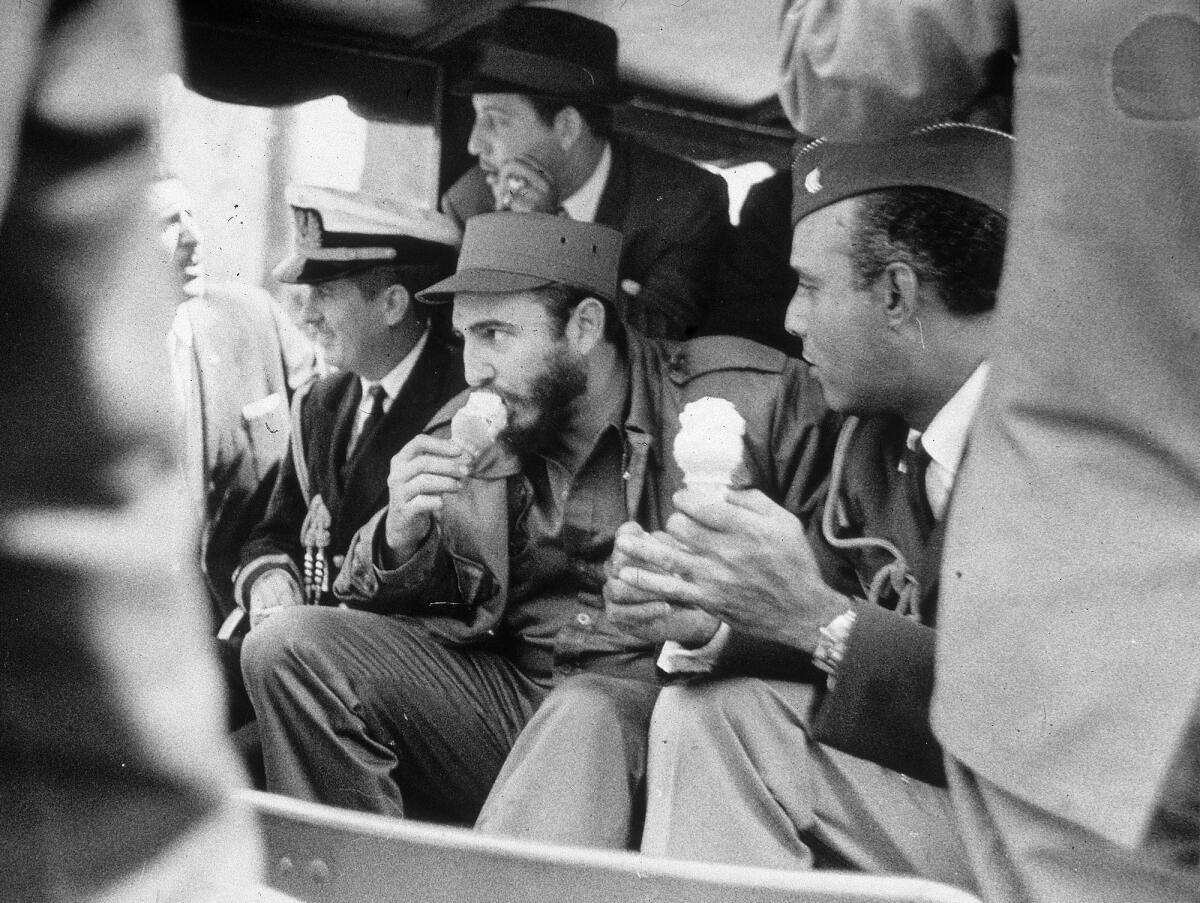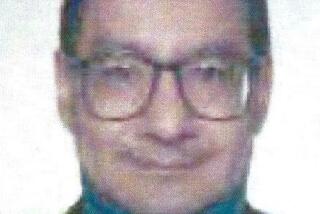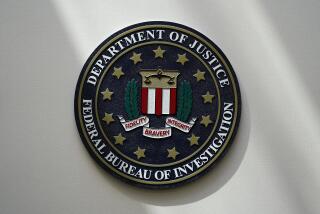Cuba-U.S. relations: A 55-year exercise in acrimony

When Cuba’s most affluent citizens fled Fidel Castro and his leftist revolutionaries after they took power on New Year’s Day 1959, they sought refuge by the thousands in southern Florida with the expectation that they’d be back home before the following Christmas.
“Next year in Havana!” was the Noche Buena toast among the exiles in 1959, 1960, 1961 and every holiday season since.
Few from the early immigration wave ever contemplated spending decades in U.S. exile, waiting in vain for the Castro regime and the communist ideology it embraced in the early 1960s to be toppled by the 1961 Bay of Pigs invasion, the economic embargo that cut off Cuba-U.S. trade for more than 50 years and the diplomatic isolation orchestrated by 11 successive U.S. presidents.
Castro is now 88, seldom seen in public and seemingly out of power, having handed the reins of the island nation of 11 million to his 83-year-old brother, Raul, six years ago. But Wednesday’s stunning news of a bilateral commitment to ending more than half a century of acrimony between Washington and Havana will likely be seen by the fading revolutionary icon as vindication of his refusal to submit to the dictates of his powerful U.S. neighbor.
The U.S.-Cuba falling-out in 1959 was as sudden as the announcement Wednesday by President Obama that it makes no sense to “keep doing the same thing we’ve done for over five decades and expect a different result.”
Castro and his relatively small band of guerrillas were a thorn in the side of Cuban dictator Fulgencio Batista for half a dozen years before they managed to seize the southern military stronghold of Santiago de Cuba in the last days of 1958 and lead a triumphant procession to the capital after Batista fled on New Year’s Eve.
The early months of the revolutionary leadership drew acclaim at home and abroad, as Castro masterfully executed the will of the poor and downtrodden and charmed U.S. journalists and socialites during his visit to Washington and New York in April 1959.
But as Castro’s ragtag government nationalized industries -- many of them U.S. joint ventures with Batista loyalists -- and cozied up to leftist regimes in Latin America and the Soviet Union, relations with Washington soured. President Eisenhower imposed the trade embargo on Cuba in October 1960 and severed relations with Havana three months after that.
Washington backed the Bay of Pigs invasion six months later, when 1,400 Cuban exiles were deposited on Cuban shores by the U.S. Navy but were quickly overwhelmed by Castro’s fighters. The embargo and the failed invasion played into Castro’s characterization of the United States as thwarted colonizers and pushed Havana firmly into the arms of the Kremlin. Castro proclaimed himself a Marxist-Leninist in 1961 and allied Cuba to the Soviet Union.
Dependent on Moscow for aid and hoped-for protection from the Norteamericanos, Castro allowed Soviet leader Nikita Khrushchev to station medium-range missiles in Cuba in 1962, setting off the white-knuckled showdown of the Cuban Missile Crisis that brought the superpowers to the brink of nuclear war.
CIA-backed assassination attempts against Castro over the next 20 years did nothing to convince Cubans that they could trust their northern neighbors, and exiles in Florida and New Jersey were successful in keeping the sanctions in place throughout the Cold War.
A further deterioration in the U.S.-Cuba relationship followed Castro’s cunning move to create a refugee crisis when, in April 1980, he responded to the democratic world’s demands that 10,000 asylum-seekers holed up in the Peruvian Embassy in Havana be allowed to leave the country. Castro opened the port of Mariel to the would-be refugees and emptied prisons and mental hospitals so they could join the flotilla, presenting southern Florida with a costly and disruptive inundation.
Cuban militants under the command of then-Defense Minister Raul Castro also joined the Kremlin’s “internationalist” adventures, fighting by the tens of thousands in Angola, building an airstrip in Grenada that spurred a U.S. invasion there in 1983, and bolstering leftist guerrilla movements throughout Latin America.
The 1991 collapse of the Soviet Union stripped Cuba of $6 billion in annual subsidies from its communist-era benefactor, plunging the tropical island into an economic disaster so severe that the government conceded that the average Cuban lost 22 pounds over the next year.
But rather than turn toward Washington as the “Special Period” ravaged industry, agriculture and already meager living conditions, Castro crafted a new alliance with oil-rich Venezuela and its fiery leftist president, Hugo Chavez. The Caracas connection remains strong today, in spite of Venezuela’s own economic woes and the 2013 death of the charismatic Chavez.
The Washington-Havana relationship was still to endure new setbacks in the post-Soviet period.
On Thanksgiving Day in 1999, a 5-year-old Cuban boy named Elian Gonzalez washed up on Florida’s shores in an inner tube, one of only three survivors of an escape attempt during which his mother and 10 others drowned. A bitter custody battle between the boy’s father in Cuba and his dead mother’s relatives in Miami played out as high drama and a diplomatic crisis in both countries for seven months, before the Clinton administration sent federal agents to seize Elian from his relatives’ home and returned him to his father.
Again, Castro’s defiance of “Yankee aggression” played to his regime’s advantage.
Under President George W. Bush, who won the 2000 election on the strength of his controversial victory in the state of Florida, U.S.-Cuban relations seemed to be in the emigre-controlled deep freeze. Still, a further turn for the worse followed the Castro government’s jailing of 75 dissidents in March 2003, when the eyes of the Western world were largely trained on the U.S.-led invasion of Iraq.
The dissidents were released over the next few years, and Obama made improving relations with Cuba a campaign issue during his 2008 run for the presidency. But the 2009 arrest and trial of U.S. contractor Alan Gross for bringing communications technology into Cuba without the government’s permission created an obstacle that prevented any warming of relations across the Florida Strait.
That is until Wednesday, when Obama revealed that Canadian-hosted negotiations between U.S. and Cuban officials had resolved the five-year standoff over Gross’ detention, secured agreement to release political prisoners in Cuba and set the adversarial neighbors on a path toward reconciliation.
Follow @cjwilliamslat for the latest international news 24/7
More to Read
Start your day right
Sign up for Essential California for news, features and recommendations from the L.A. Times and beyond in your inbox six days a week.
You may occasionally receive promotional content from the Los Angeles Times.







